#mecha history
Explore tagged Tumblr posts
Text
I had this very old Soundwave doodle of him as a World War One British tank, I still think it's a really cool idea lol


#transformers#au#art#digitalart#character design#photoshop#decepticons#Soundwave#robot#mecha#doodle#wip#ww1#great war#history#world war one#redesign#scifi#fanon#fanart#original design
1K notes
·
View notes
Text

BLACK HISTORY vol. 1 [Armored Trooper Votoms Series] by Akimoto Kouzi
217 notes
·
View notes
Text

Ah yes, the Prismatic experience when they deliver your main subclass in the starter pack 😌
#destiny#destiny 2#destiny the game#the final shape#destiny art#bungie#the young wolf#d2 ghost#hunter guardian#fanart#comic#comics#and now we're back to alfa the hunter and zeta the ghost in their usual dumbass schedule#fun fact i literally beat the legendary campaign with the lament for all the missions#and i didn't struggle so much like i've seen others??#yes even the mecha one - but i beat it with trace rifle kjhgfd#THIS SWORD HAS HISTORY - IT HAS MEANING TO US EXOS - OFC IM CARRYING IT TO THE END#sometimes i think people underestimate the lament - or maybe im just very stubborn on keeping it but again i didnt struggle#as for prismatic i only began to feel truly prismatic when i got the gunpowder aspect 8D#altho i used the arc grenade for a while - i mostly used to increase my light bar#the stasis one still fit best to me WHICH BTW FROST ARMOR MY BELOVED#you're all lucky i play in pt-br or that would be another 'the line between light and dark iS SO VERY THIN' reference
217 notes
·
View notes
Text
The politics in Lancer the mech pilot TTRPG seems center left to me. A good way to explain what's going on in that game's universe is with this overly long metaphor:
Imagine an alternate history where Nixon somehow beat JFK Jr to the white house, and once in office he lets Kissinger go nuts setting fascists up on an accelerated schedule. That's what Union's Second Committee was like. Then Tricky Dick procedes to nuke Vietnam a couple times. That's the Hercynia Crisis and that FTL Piston weapon launch. JFK and company ride the shock and horror of approaching nuclear war into office on the promise of de-escalation and enforcing civil rights, and they deliver. That's the coup that formed Union's Third Committee. Kissinger, Nixon, and the entire pentagon/raytheon corp take over NASA in Cape Canaveral, Florida where they form a tolerated corporatocracy in exile. That's basically Harrison Armory on the planet Ras Shamra. Now a United liberal-leftist front of America is actively trying to tear down dictatorships around the world that Kissinger set up (he got assassinated at some point in this time line) and replace them with socialist democracies. That is Union's Justice/Human-Rights Department and a few other government branches. So far they've had some success although people are pointing out that it's a bit hypocritical that the liberators are using weapons from corporate conservative states where civil rights are discretely curtailed. That's what's driving political discourse in 5016u in Union's legislative body, the Central Committee and it's myriad political parties.
So yeah Lancer's political intergalactic landscape is a bit like modern day? Except also cthulhu is giving out reality-breaking tech to militant civil rights advocates and random civilians? That's what HORUS basically is, btw.
Now that I've written this out, it would make for a good american alt-history with mechs campaign in Lancer...
#henry kissinger#lancer rpg#alternate history#union's third committee#union's second committee#harrison armory#science fiction#table top role playing#ttrpg#mech#mecha#usa politics#usa history#richard nixon#john f kennedy#us history#us politics#horus
421 notes
·
View notes
Text

Cooperative Lunar Station by Element115
43 notes
·
View notes
Text
An Abbreviated History of Mecha Part 4.2: A Grand Glorious Gathering (1996-2000)

Welcome back to An Abbreviated History of Mecha! Last time we left off, the Lost Decade had just begun, Gundam got a radical makeover, CLAMP came onto the scene, Takara created a replacement for Diaclone, and Evangelion would begin its run on television. What we'll see now is the rise of a lot of fan-favorite shows in this era, but we will also see the sudden appearance of a third honorary mecha series. We will also see why [adult swim] is going to play a big picture in all of this, as they will begin to get more involved with the production of anime. With all of that out of the way...
Big O!
Showtime!

Pocket Monsters/Pokemon (1996, honorary mecha show 3)
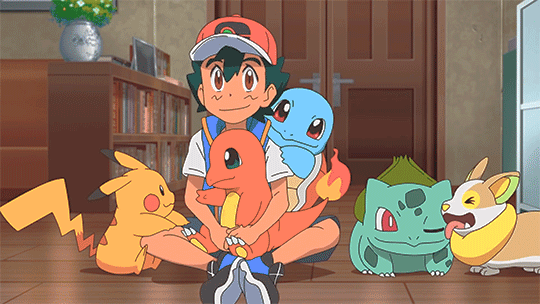
Pocket Monsters, or Pokemon for short, is a multimedia series created by Satoshi Tajiri and the folks at Game Freak, Creatures, and Nintendo that would round out the four anime that would make anime mainstream alongside Dragon Ball Z, Sailor Moon, and Gundam Wing. The reason why Pokemon is worth mentioning in a series about mecha is due to the nature of a lot of mecha stories, primarily those involving giant robots: Pokemon would grow to eventually become the single largest franchise OF ALL TIME. And as it is a franchise that is aimed primarily at children, this would prove to be one of many things that would help in the decline of giant robot stories, as a lot of the giant robots of old relied heavily on merchandise sales (namely in the form of toys) in order to be successful. Now that Pokemon is in the picture, there is competition, especially since Pokemon's video games would be published by a little company known as Nintendo.
Fortunately, Pokemon wouldn't become the highest-selling franchise of all time just yet. It would take a couple of years for that to happen.
Martian Successor Nadesico (1996) & Martian Successor Nadesico: The Prince of Darkness (1999)
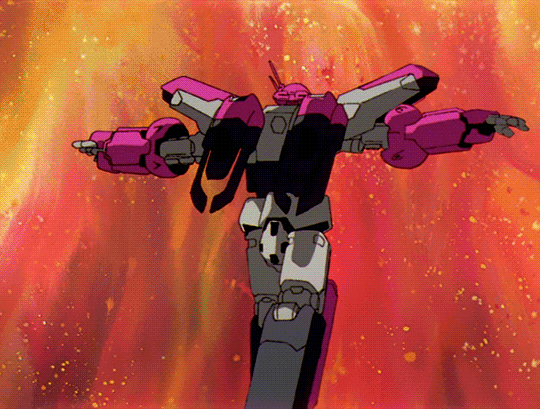
Produced in 1996 by Xebec, Martian Successor Nadesico would be the first series since the original Gundam to really take a swing at subverting and/or deconstructing the giant robot. Primarily a screwball comedy, Nadesico is known for its extensive use of its show-within-a-show Gekiganger 3 (a pastiche of shows like Getter Robo) to foreshadow events that would happen later on in the story.
Nadesico proved to be popular, but that chance of becoming something more would peter out with the release of the Prince of Darkness movie in 1999.
After War Gundam X (1996)
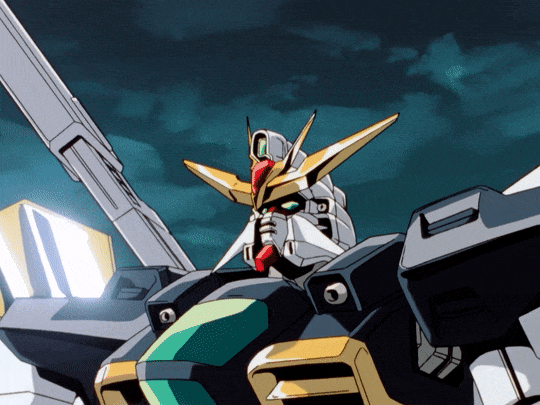
Also releasing in 1996 was After War Gundam X, a series that would suffer from the fact that it would be the fourth Gundam series in a row on television. Not helping things is the fact that Gundam X would infamously have its episode count reduced from the then-standard 50 episodes to 39, and then it would also be moved to the Japanese equivalent of the Friday Night Death Slot.
It would remain in obscurity for years until 2013 when Gundam Build Fighters would feature a protagonist whose primary gunpla kit would help to bring the series back into the spotlight.
The Vision of Escaflowne (1996)
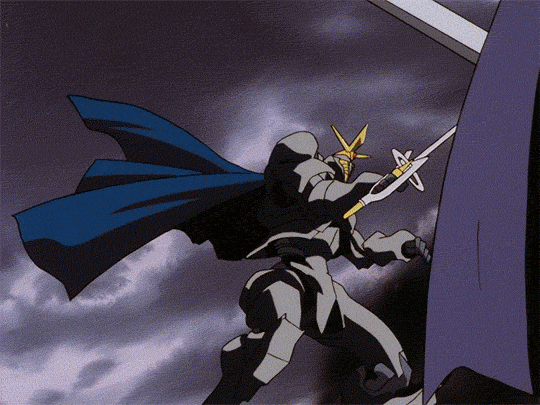
When one thinks of older mecha isekai shows, they are usually thinking of 1996's The Vision of Escaflowne. Escaflowne, unlike its older sister series Magic Knight Rayearth, would feature its giant robots more openly in a truly even blend of mecha action, fantasy adventure, and romance.
Armored Core (1997)

1997 would see the release of legendary game development studio From Software's Armored Core. Featuring mechanical designs by Shoji Kawamori of Macross fame, Armored Core would see the player navigate through a world of high speed mecha action and hair-tearing difficulty that would become a trademark of FromSoft's future games.
Cowboy Bebop (1997)

Cowboy Bebop would be the brainchild of one Shinichiro Watanabe. Released in 1997, Cowboy Bebop would take Japan by storm due to its mix of science fiction with the aesthetics and tropes of the western. Part of Cowboy Bebop's legacy has less to do with its popularity in Japan and more to do with how well it did in the west: which was very well.
Like "Cowboy Bebop was part of what made [adult swim] successful in the early days" well. If the quartet of Dragon Ball Z, Sailor Moon, Gundam Wing, and Pokemon made anime mainstream, then Cowboy Bebop would be the one that would prove to the mainstream that anime wasn't just for children.
The King of Braves, GaoGaiGar (1997)
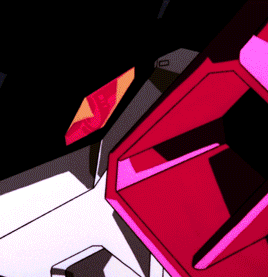
Speaking of anime geared for children, 1997 would also see Takara's Brave franchise peak with its final entry: The King of Braves, GaoGaiGar. Acting as an homage to the original Brave Exkaiser, GaoGaiGar would go down in legend as one of the most hot-blooded mecha shows of the 90's, second only to fellow Sunrise production Mobile Fighter G Gundam. Unfortunately, GaoGaiGar would see its viewership falter due to the success of the Pokemon anime, which would bring an official end to the Brave franchise. But it would not be the end of GaoGaiGar's story just yet, as the production staff got to work on another series that would serve as a spiritual sequel to The King of Braves.
Full Metal Panic (1998)
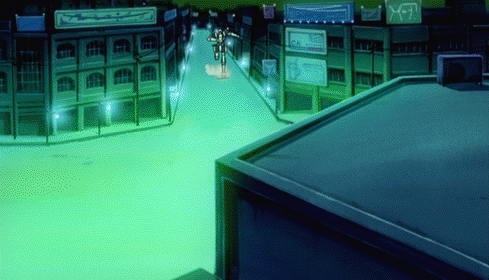
In 1998, the light novel Full Metal Panic! would be published by Fujimi Fantasia Bunko. Written by Shoji Gatoh, Full Metal Panic would blend elements of giant robot sci-fi with elements of the romance, slice-of-life, and comedy genres. The series would eventually branch out into manga and anime at the turn of the millennium and prove to be one of the big hits of the early 2000's.
While the original light novel along with its manga counterparts would wrap up their stories eventually, the anime would ultimately be abandoned after the release of its fourth season, Invisible Victory, in 2018.
Dai Guard (1999)
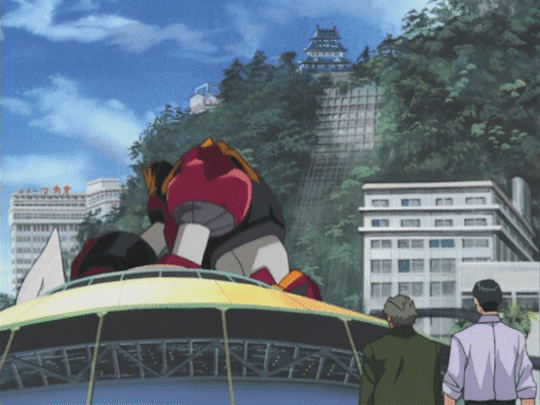
What if you took Getter Robo, made it adhere to real-world physics as much as possible, and then have be piloted by a trio of office workers who have to also navigate a lot of corporate red tape on top of the military trying to undermine their endeavors? That's more or less 1999's Dai-Guard in a nutshell. And don't let that fool you: the giant robot is still as cool as any other giant robot, regardless of the hoops the main cast have to go through just to use the damn thing.
Turn A Gundam (1999)
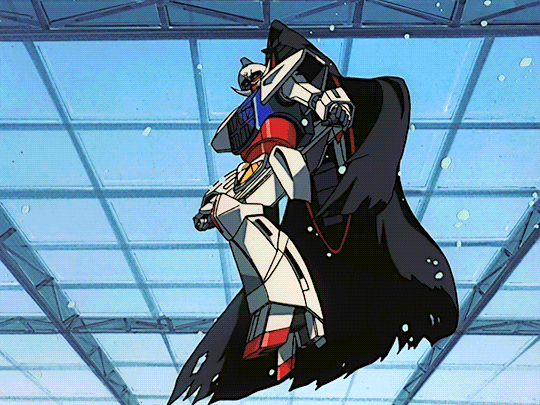
Meanwhile at Sunrise, Yoshiyuki Tomino would return to the directing chair for 1999's Turn A Gundam as a way to celebrate Gundam's 20th anniversary. Turn A would feature a very unique set of mechanical designs courtesy of Syd Mead, who was known for his work on Blade Runner, Tron, and Aliens. This series would also mark the end of Gundam's use of cel animation, as the next Gundam series would be the first to use digital animation. As a result, the animators went all out on Turn A Gundam's animation as a proper send-off to cel-animation.
Unfortunately, while Turn A is often regarded as one of, if not the, best Gundam series, its lackluster performance during its initial run would not be enough to help Gundam out. It wouldn't be until 2002 when Gundam would become a major hit again.
Xenogears (1999)
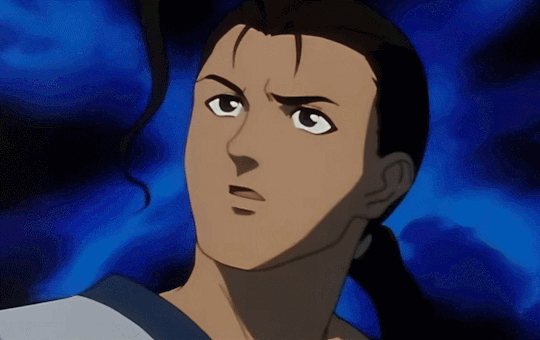
Directed by Tetsuya Takahashi, Square Enix would release the JRPG Xenogears in 1999. Xenogears would differentiate itself from the competition by combining a combo-based JRPG with giant robots and Gnosticism. A lot of Gnosticism. Unfortunately for Takahashi and company, Xenogears would prove to be a tad bit more ambitious than expected, and boy is that oversimplifying what happened to Xenogears. Suffice it to say that what happened to Takahashi and company to form Monolith Soft under Namco. But, like a lot of other things covered here, that is a story for another time.
Betterman (1999) & The King of Braves, GaoGaiGar FINAL (2000)
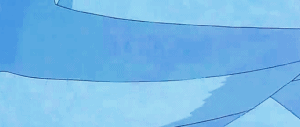
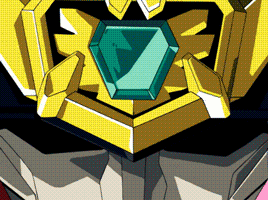
Reuniting for a spiritual sequel to The King of Braves, GaoGaiGar, the same animation team would create Betterman. Taking a turn to being darker and edgier than its older brother GaoGaiGar, Betterman would be the basis for the OVA finale The King of Braves GaoGaiGar FINAL adding things like a darker storyline, fanservice, and, weirdly enough, more HOT BLOOD.
Unfortunately, plans for the two series to have a crossover would fall apart as Takara shuttered the Brave franchise for good after GaoGaiGar FINAL. It wouldn't be until about 2018 that the two would finally get to meet in The King of Kings: GaoGaiGar vs Betterman.
The Iron Giant (1999)
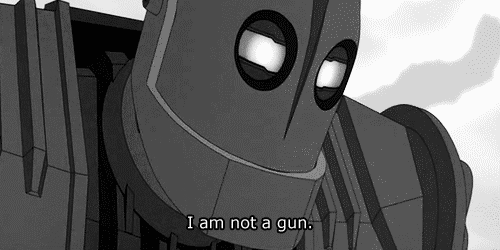
Released in 1999 by Warner Bros., The Iron Giant would be the directorial debut of one Brad Bird (the guy who did The Incredibles, among other things). Set in the 1950's, The Iron Giant would tell a story similar to that of the original Godzilla, though in the case of The Iron Giant, the titular character would be treated with much more sympathy due to his earnest attempts at trying to not destroy the town.
The Big O (1999-2003)
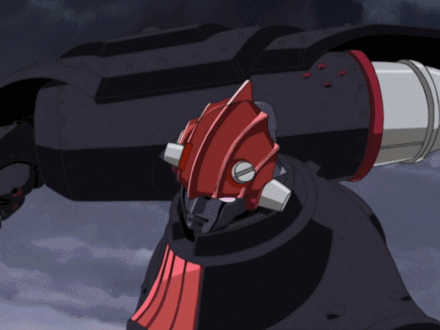
Created in 1999 by Sunrise, The Big O was a mecha show influenced by American media like Batman. Helmed by most of the people who worked on the Giant Robo OVA alongside the controversial Chiaki J Konaka, The Big O was supposed to be a more commercial spin on Giant Robo. Which is wild, because the series was cancelled after its first season in Japan.
Fortunately, that little American channel called [adult swim] would come to the rescue and produce the second season, as The Big O was a big success in the US.
For more on The Big O, I'd recommend Argonbolt's video On The Big O.
Throwbots (1999)

And finally, LEGO would release the Throwbots series of toys for their Technic line in 1999. Throwbots would prove to be moderately successful, but it's legacy is most known for being the predecessor to BIONICLE.
Conclusion
And that's a wrap on the 90's. As we have seen, the last two decades have been a big boon for mecha, though this would be soon to pass in the following decades. What we will begin to see in the following decades is a change to how anime in general is produced. You can even see it as early as 1999 with some shows such as Dai-Guard using digital animation as opposed to cel animation. The 2000's will see digital animation become the primary way shows get animated, though there will be growing pains. It should be interesting to note that cel animation doesn't go away in its entirety until 2015 when the last holdout, one Sazae-san, finally gave up the cel-animated ghost.
"The journey was long, but soon I found myself accompanied by a strange man in a black tuxedo. I couldn't tell if he was friend or foe, but he looked like he was about to faint from starvation. I think I remember him saying his name was Van... Van of... I don't remember what his title was anymore, he kept on changing it every time I asked him."
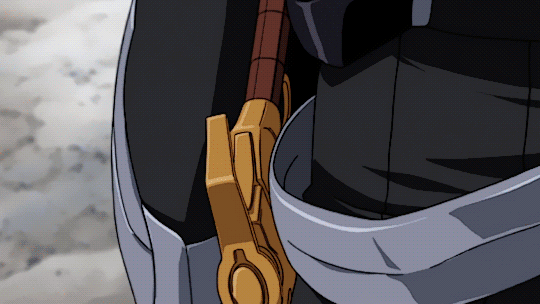
#anime and manga#mecha#the king of braves gaogaigar#gaogaigar#the big o#dai guard#turn a gundam#after war gundam x#mobile suit gundam#martian successor nadesico#full metal panic#xenogears#the vision of escaflowne#better man#armored core#the iron giant#cowboy bebop#pokemon#throwbots#an abbreviated history of mecha
45 notes
·
View notes
Text

So I wanted to draw Lincoln riding a mecha in space but I was too tired to finish it or have the time to do so.
I'm drawing it in 初音電撃作戦's way.
18 notes
·
View notes
Text

18th century france coded space sci-fi with mecha, is that anything
#maminii art#art#artwork#illustration#artists on tumblr#artist#illustrator#my artwork#my art#sketch#drawing#doodle#mecha#mecha art#history#historical wear#historical fiction#concept art#original character#original art#oc artist#oc#traditional art#traditional artist#small artist#traditional drawing#traditional illustration#traditional media#traditional sketch#oc artwork
22 notes
·
View notes
Text
If I had a time machine, I would show ancient Romans mecha anime. This isn't a "this would kill them thing". I feel like they would enjoy it a lot.
45 notes
·
View notes
Text
🚨 MORE ABOUT BUNNY’S HISTORY!!
June 4th, 1999 was the start of something truly great! The first drawings of Bunny included him with a small black nose!

In November 2000, he drew Bunny in Mechas; Akira Toriyama and Japanese mecha were big inspirations! These designs were influenced by French small tanks and police armored vehicles!


And also, here’s the very first Bunny in Flash from November 2000 as well!

Also!!!
There’s more!
He was in art school and had a big exam to do, which was choosing a location to do graphic work on! Using an old Bolterie, he picked up things from the rubble + a lot of old pictures and mixed it.
It was then that he decided to add a funny rabbit with bolts everywhere; this is counted as Bunny Maloney’s first appearance!


#bunny maloney#obscure media#fun facts#pinpin le lapin#HE’S SO CUTEE#I like his button nose#But I do understand why it’s gone xD#akira toriyama#japanese#mecha#History of Bunny#art school#90s character#early 2000s#He’s so cool! 🔥#I love him!!#mékolai
16 notes
·
View notes
Text
October Anime Releases 2024 - Part 1

• I'll Become a Villainess That will Go Down in History x October 1st via Crunchyroll

• Re:ZERO -Starting Life in Another World Season 3 x October 2nd via Crunchyroll

• 365 Days to the Wedding x October 3rd via Crunchyroll

•Mecha-Ude: Mechanical Arms x October 3rd via Crunchyroll

• Good Bye, Dragon Life x October 3rd via Crunchyroll

• Negative Positive Angler x October 3rd via Crunchyroll

• Dan da dan x October 3rd via Netflix & Crunchyroll

• Rurouni Kenshin -Kyoto Disturbance- x October 3rd via Crunchyroll

• Sword Art Online Alternative: Gun Gale Online II x October 4th via Crunchyroll

• Blue Lock Season 2 x October 5th via Crunchyroll
#blerdsunited#blerds united#united blerds#unitedblerds#nerds#anime#blerdcommunity#blerds#black anime characters#blerd community#black anime#blerdsunite#blerdnation#anime aesthetics#i'll become a villainess who goes down in history#rezero season 3#365 days to the wedding#mecha ude mechanical arms#goodbye dragon life#negative positive angler#dan da dan#rurouni kenshin: kyoto disturbance#sword art online alternative: gun gale online#blue lock season 2#new anime releases#anime release#newanimereleases#anime recommendation#animerecommendations#anime lovers
15 notes
·
View notes
Text
The Cataphract - Inspired by Ancient Cavalry
Armored Core Fun Facts:
We first meet the heavily armored and imposing Cataphract in the story trailer for Armored Core VI, and then battle it a few times in-game. This beast, packing a hell of a punch and heavily armored, does justice to its historical inspiration.
The word "Cataphract" comes from the Greek "kataphraktos" (κατάφρακτος) meaning "completely enclosed" or simply "armored", and referred to heavy cavalry of Iranian origin known for both horse and rider being covered in scale armor, creating a very tanky unit that was hard to oppose.
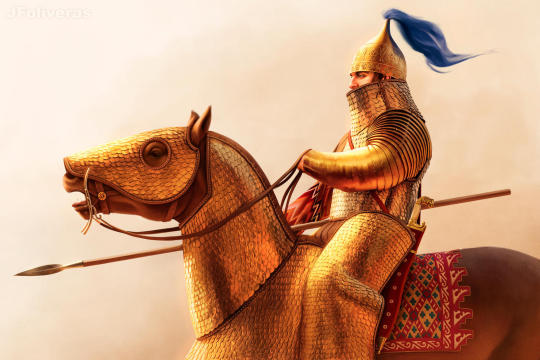
These heavy cavalry were known for crashing into opposing infantry and scattering enemy soldiers, taking advantage of their heavy armor and weapons to send lightly armored infantry and cavalry into disarray and mow them down if possible, and though they originated around Iran, their use spread throughout Eurasia and North Africa.
The Cataphract in Armored Core VI is similarly beastly and intimidating, and you can only imagine what light work it would make of garden variety MTs based on how much trouble it causes for even small groups of ACs, and even the player (depending on your build).
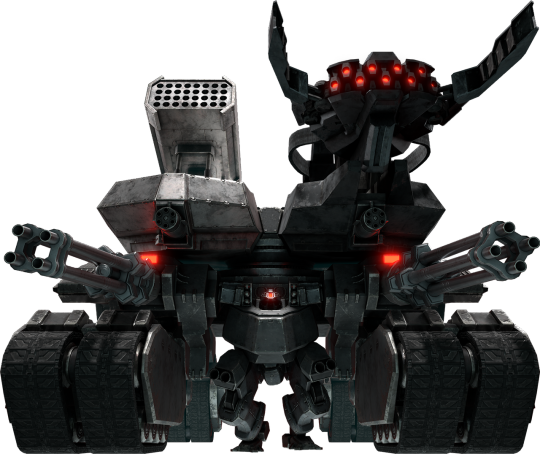
#armored core#armored core 6#armored core vi#armored core series#fires of rubicon#mech#mecha#science fiction#scifi#history#cataphract
85 notes
·
View notes
Text

Morav - The History of Robotic Warfare Cover Art by Marc Gabbana
45 notes
·
View notes
Text


Advances in space technology.
#my art#cthulhu mythos#space#vehicle design#spaceship design#spacecraft#mecha#science fiction#future history
17 notes
·
View notes
Text
An Abbreviated History of Mecha Part 4.1: THE EAST IS BURNING RED!!! (1990-1995)

(Read in the voices of Yosuke Akimoto and Tomokazu Seki) ANSWER ME, DOMON! THE SCHOOL OF THE UNDEFEATED OF THE EAST!!
THE WIND OF KINGS!!
ZENSHIN!!
KEIRETSU!!
TEMPA KYOURAN!!!
LOOK, THE EAST IS BURNING RED!!!
Welcome back to An Abbreviated History of Mecha! Last time, we saw the proliferation of mecha shows throughout the 80's. We also saw the introduction of an incomplete list of influential industry people who got their start in the 80's. In the 90's, we will begin to see a continuation of this proliferation of mecha works throughout the decade. The 90's will also see a lot of the stories I have talked about pay off, as
What we will also see in the 90's are a few major events that will affect the world of mecha in pretty major ways. The first is the bursting of the Japanese economic bubble, which would cause the Japanese economy to go from an era of excess to one of stagnation known as the Lost Decade. Another is the sudden arrival of a third honorary mecha series, except this honorary mecha series would arguably help to kickstart the slow decline of mecha stories. It should be noted that this series is not the only reason for the slow decline of mecha shows. That is a whole conversation in and of itself, and one that, maybe one day, I will talk about.
The last thing that should be noted about the 90's is that this would also see the creation of a handful of networks in the US that would help to bring anime over to the west, namely one Cartoon Network (and more importantly, its spinoff networks Toonami and [adult swim]) for the people in the US. While anime had seen some popularity in the west thanks to shows and movies like Robotech, Voltron, Ghost in the Shell, and Akira, it would be the four-part knockout of two of the series mentioned here alongside animanga juggernauts Dragon Ball Z and Sailor Moon that would cause anime to become mainstream.
That should be everything. With all of that out of the way...
Gundam Fight!
READY?! GO!!!
Yuusha Exkaiser/Brave Exkaiser (1991)

Starting us off in 1991, Takara would realize that, due to the sudden success of Transformers in the US, it might be time to diversify as Transformers had no longer felt like it was truly their property anymore. As such, they would create the Yuusha line, with their debut series being Brave Exkaiser. Exkaiser would prove to be a massive hit amongst its intended younger audience and would kickstart a whole franchise, which would also include:
The Brave Fighter of Legend Da-Garn (1992)
The Brave Express Might Gaine (1993)
The Brave Police J-Decker (1994)
The Brave of Gold Goldran (1995)
Brave Command Dagwon (1996)
The King of Braves, GaoGaiGar (1997), which I will talk about next time.
The Brave franchise is important due to how often this series gets referenced by other works, with the usual reference points being either Might Gaine or GaoGaiGar. More importantly, both Brave Exkaiser and the Giant Robo OVA would usher in an era of works that looked to the older mecha shows like Tetsujin 28, Mazinger Z, and Getter Robo for inspiration as opposed to Mobile Suit Gundam.
Super Robot Wars (1991) & Another Century's Episode (2003)

1991 would also see the start of Banpresto's Super Robot Wars, the ultimate crossover of in terms of mecha works. Super Robot Wars is where a lot of mecha-related terminology such as Super Robots, Real Robots, and the Holy Trinity (Mazinger Z, Getter Robo, Gundam 0079) come from. Super Robot Wars would also introduce its own set of original robot designs, each with their own unique pilots. Super Robot Wars would eventually gain a sister series in the form of 2003's Another Century's Episode.
One of the most important factors of Super Robot Wars is that, due to its celebratory (some might even say masturbatory) nature, these games can serve as a good metric behind what is a mecha story.
Giant Robo the Animation: The Day the Earth Stood Still (1992)

In 1992, Yasuhiro Imagawa and company would release the first episode of the now-legendary OVA Giant Robo the Animation: The Day the Earth Stood Still. This OVA, along with Brave Exkaiser, would begin the push for giant robot shows to take inspiration from works that were not Mobile Suit Gundam. The Giant Robo OVA, on top of being one of Imagawa's magnum opera (fun fact: the plural of magnum opus is magnum opera) alongside Mobile Fighter G Gundam, would also be the direct inspiration for western darling The Big O.
Kyoryu Sentai Zyuranger (1992) & Mighty Morphin' Power Rangers (1993)

If you're wondering why I mentioned Super Sentai in part 2, this series is why.
In 1992, the Super Sentai series Kyoryu Sentai Zyuranger would release in Japan. While, to my understanding, it was about as popular as the rest of the Super Sentai franchise, this specific series in particular would attract the attention of one Haim Saban. With some editing here and there, along with filming new segments featuring an American cast as opposed to using the original footage featuring the original Japanese cast, Saban and company would create Mighty Morphin' Power Rangers, which would air for the first time in 1993. Mighty Morphin' Power Rangers would go down in history as one of many series that would help pave the way for animanga to gain a foothold in western media.
Denkou Choujin Gridman/Gridman the Hyper Agent (1993) & Superhuman Samurai Syber Squad (1994)

1993 would also see the legendary Tsuburaya Productions, after a long period of struggles, finally make a comeback with their new series Gridman the Hyper Agent. With its smaller budget, the Hero of Dreams would come to be known as the hero who would help Tsuburaya Productions come back to relevance in the 90's.
Due to the success of Mighty Morphin' Power Rangers, other US companies would want in on the action. DiC Entertainment would buy the US distribution rights for Gridman and would try to put their own spin on Power Rangers by creating Superhuman Samurai Syber Squad.
Eventually, the people at Studio Trigger, who were interested in making an anime based off of Ultraman, would reach out to Tsuburaya Productions in an attempt to get permission to do so. While their initial request for Ultraman specifically was shot down, they were allowed to choose any of Tsuburaya's other properties for their anime adaptation. And they would choose Gridman for their subject, which would lead to the creation of SSSS.Gridman (a show I will talk about later).
If you have time to spare, you should also check out Cheese GX's video on the history behind Gridman.
Patlabor 2 (1993)

The fan-beloved Patlabor 2 would also release in 1993. Reflecting the realities of post-economic bubble Japan and the ensuing Lost Decade, Patlabor 2 would trade out the optimism commonly associated with the franchise with a much more cynical and grounded (even by Patlabor standards) tone. People tend to view this movie as being what Patlabor is all about, but in my opinion, this movie is an anomaly that can only truly be appreciated by knowing the context of everything that came before it.
Magic Knight Rayearth (1993)

1993 would also see the publishing of the shoujo manga series Magic Knight Rayearth. Created by the legendary mangaka group CLAMP, Rayearth would be one of the first magical girl series to really escape the long shadow cast by one Sailor Moon (if I understand my magical girl history correctly, Sailor Moon is basically the magical girl equivalent of the original Mobile Suit Gundam). How was Magic Knight Rayearth able to do this?
By adding giant robots into the mix. That's right: Magic Knight Rayearth is most likely the reason why there is overlap between magical girl and mecha fans. While remembered by many as being an important series in the canons of mecha, magical girls, and CLAMP, Rayearth's legacy would largely be overshadowed by one Cardcaptor Sakura.
Mobile Fighter G Gundam (1994)
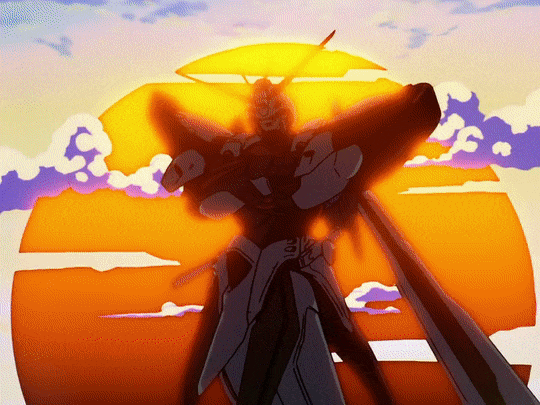
1994 would see Gundam return in a radically different form with the martial arts-inspired Mobile Fighter G Gundam. Often considered to be the other iconic series of Yasuhiro Imagawa, G Gundam would mark the beginning of a new era of Gundam by being the first alternate universe series to exist, thus allowing the franchise to flourish while letting the original Universal Century timeline continue to exist and get its own stories. Because of its radically different nature though, G Gundam is oftentimes looked down upon as a series that spits on the legacy of the Gundam franchise.
And again, not to toot my own horn here, but I also have a trilogy of posts all talking about G Gundam. All three posts seemed to be pretty popular relative to my other posts, so there seemed to be something in them that resonated with a lot of readers.
New Mobile Report Gundam Wing (1995) & New Mobile Report Gundam Wing: Endless Waltz (1996)

Following on from G Gundam is 1995's New Mobile Report Gundam Wing, which is arguably the most important Gundam series after the original and Gundam Seed in the 2000's. As a return to the war stories of the original Gundam, the reason why this series is important is because Gundam Wing would be one of the big four anime series that would make anime become mainstream in the West.
In my opinion though, Gundam Wing's legacy begins and ends with it being the first Gundam series to air in the West. In Japan, another series would air at around the same time as Gundam Wing, one that would loom over the rest of canon of mecha due to its impact on the anime industry and Japanese pop culture as a whole.
Neon Genesis Evangelion (1995) & The End of Evangelion (1996)

Ah yes, the original "Not Like the Other Girls" mecha anime.
The series that would hamper a lot of Gundam Wing's cultural impact would be Hideaki Anno and Studio Gainax's legendary Neon Genesis Evangelion, and the second of Gainax's Big Four alongside Gunbuster. Created as an homage to shows like Ultraman and Space Runaway Ideon, Evangelion would take the zeitgeist by storm, forcing its way into the pantheon of the mecha canon like... well, like an Evangelion Unit tearing through an Angel's AT Field. There was a certain je ne sais quois to the series that made it stick to a lot of viewers at the time, and a lot of the history and context behind this series' production would help shape a lot of its more cerebral moments.
Anno would eventually revisit this series in 2007 by remaking this anime series into a quartet of films known as the Rebuild of Evangelion series. At first just a project to bring Evangelion to the 21st century, the Rebuild films would eventually become the first of the Shin Japan Heroes Thematic Universe, which would come to also include:
Shin Godzilla (2016)
Shin Ultraman (2022)
Shin Kamen Rider (2023)
The problem with a series like Evangelion is that, while it is a culturally important series that deserves a lot of the attention and praise it gets, a lot of Evangelion fans tend to go a little bit too far. It's subversive nature tends to become exaggerated to the point where Evangelion is often treated as being subversive of mecha, and thus, not like the other mecha shows. This is, in large part, why the infamous idea of Evangelion being "Not like other mecha shows because it deals with character drama" comes from, and it's something that I'd like to talk about at some point in the future after all of this.
Conclusion
And there you have it! As we get into the latter half of the 90's, we will see a lot of iconic mecha shows begin to pop up. We will also see [adult swim] begin to really play its part in making anime more mainstream, along with Gundam begin to decline and the end of the Brave franchise. We'll also see the appearance of the crazy man known as Tetsuya Takahashi make his directorial debut in what is quiet possibly the single most ambitious JRPG project of all time along with a surprise appearance by... LEGO?!
Next time, Part 4.2: A Grand Glorious Gathering!!
This will be the key to victory.
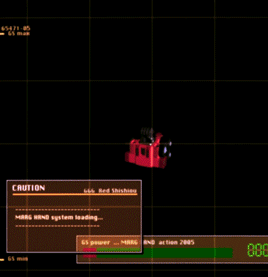
#anime and manga#mecha#mobile fighter g gundam#brave exkaiser#magic knight rayearth#giant robo ova#giant robo the day the earth stood still#patlabor#patlabor 2#power rangers#super robot wars#super robot taisen#new mobile report gundam wing#gridman the hyper agent#neon genesis evangelion#an abbreviated history of mecha#superhuman samurai syber squad#denkou choujin gridman#kyoryu sentai zyuranger
42 notes
·
View notes
Text
another day volunteering at the line ark museum. everyone keeps asking if they can fuck white glint. buddy they wont even let me fuck it
#dibi#armored core#sorry this got turned into a mecha blog.#fromsoft played the long game and they got me (i get into dark souls during my history degree and fixate on the knights)#(then they keep making games and get me hooked)#(and then eventually they release a new armored core and now i'm going to career change to a mech pilot)
21 notes
·
View notes